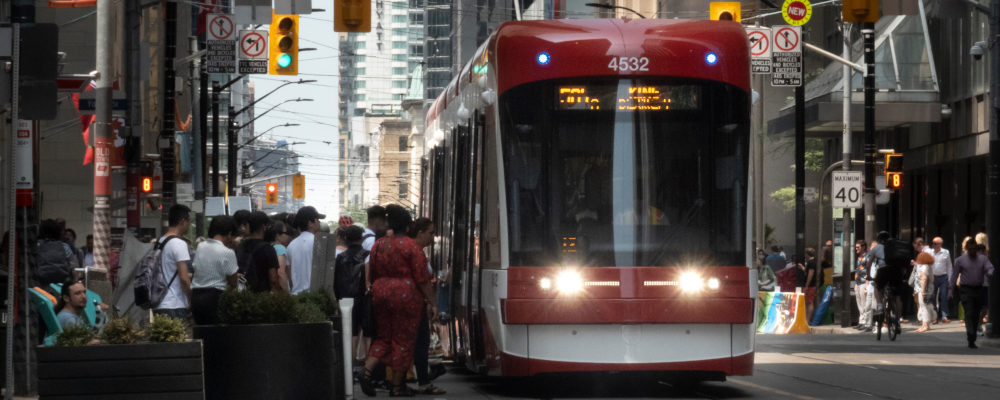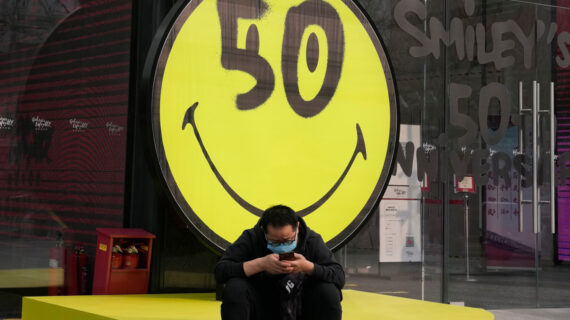The Ontario Liberal Party (OLP) has pledged to reduce public transit fares to a dollar per one-way fare, or $40 for a monthly pass until January of 2024.1“The fare reduction would apply to every transit system in Ontario, including municipal transit, all GO Transit services, and Ontario Northland service – with the provincial government fully replacing transit systems’ lost revenue, ensuring no municipal government is impacted by this decision.” https://ontarioliberal.ca/ontario-liberals-will-slash-all-transit-fares-across-the-province-to-1/ The $1.8 billion pledge is paired with a pledge of $375 million in annual transit operating funding.2“The current rate for an Adult TTC monthly pass is $156, while a one-way PRESTO ticket costs $3.25. Dubbed ‘Buck-a-Ride’, the plan is estimated to remove 400,000 cars from the road on a daily basis, and is expected to cost $710M in 2022-2023, and $1B in 2023-2024.” https://storeys.com/provincial-liberals-promise-buck-a-ride-for-all-transit/ While this might sound like a reasonable proposal in the abstract, it could conceivably make public transportation in the province worse rather than better.
Broadly speaking, there are three separate flaws with this approach. First, Queen’s Park getting directly involved in funding the day-to-day operations of local public transit agencies could have unintended long-term consequences. Second, in the short term, the policy could make public transportation worse. Finally, the program will result in some pretty grotesque subsidies—not by error, but by design.
Public transportation in Ontario is largely run by municipal governments, with the exception of GO Transit and Ontario Northlands. Typically municipal transit agencies operating costs are funded by a combination of user fees and municipal operating subsidies. In 2019, the average farebox recovery ratio for Canadian public transportation agencies was 51 percent, while it was 66 percent in Toronto. So, roughly speaking, half of public transportation operating costs during normal (non-pandemic) times are borne by riders, and most of the rest is borne by local taxpayers. While there is a case to be made that riders should pay a greater proportion of the cost of transportation—both for transit users and for drivers—at the very least, locals tend to pay the operating cost of their own public transit agencies (though capital projects are heavily funded by upper levels of government).
The OLP proposal would fundamentally change the nature of local public transportation funding. Consider Toronto, where a one-way TTC fare costs $3.25. That doesn’t cover the full cost of the average ride (otherwise the farebox recovery ratio would be 100), but it covered 2/3rds of the cost pre-pandemic. This does mask some cross-subsidies in the system. For instance, someone taking a streetcar for three stops might cost the system less than someone travelling across the city. But in general, riders pay a good chunk of the cost. Now, if fares were capped at $1, the other $2.25 would be covered by the provincial government. That is a major uploading of public transportation costs.
While it’s understandable that people facing increasing costs of living might like the idea of paying less to get around, making local public transportation more reliant on provincial funding would be a mistake. The more Queen’s Park pays, the more say Queen’s Park will have over local public transportation decision-making. Proponents of this approach should be careful what they wish for. If this temporary freeze became permanent and a future government decided that transfers to public transit agencies aren’t a top priority, times might get lean for public transportation—whether local voters like it or not. It’s not hard to envision a scenario where Toronto City Council determines they need to increase fares to maintain service levels but the province says no. That’s exactly what happened when the City wanted to implement road tolls to tame traffic congestion.3Wynne rejects Toronto’s request for road tolls, and almost everyone comes out ahead There’s no reason why local governments shouldn’t be able to make these decisions for themselves.
Another worry is that if the program has the intended effect of increasing ridership, it might make public transportation worse for existing riders. After all, more riders on the same number of buses would lead to more crowding. Ridership levels are well below pre-pandemic levels, and it’s possible that the additional operating support might offset that. But it really depends on where marginal riders come from, and how quickly transit agencies can adjust.
For instance, many transit routes in Toronto are still running under capacity given how many white-collar workers are working from home. So if the policy leads more people to use the subway to get around (particularly outside of peak hours), it might not be a big deal. But if it leads to an expansion of transit demand in suburban areas that currently have fewer routes and less frequency, that could cause some short-term bottlenecks. Given that the TTC is aiming to return to 100 percent of pre-pandemic capacity soon, it doesn’t seem likely there will be all that much spare capacity in the GTA. It’s not like we’ve got a Depression-era surplus of workers hanging around looking for work or an excess supply of vehicles floating around. Quite the opposite. We’ve got a tight labour market and supply chain constraints to deal with. This could lead to congestion on some routes, worsening the experience for existing riders.
Of course, it’s possible that the subsidy will simply fall short of its objectives. That was the case with the federal Public Transportation Tax Credit, which the Trudeau government decided to eliminate after a study estimated that it only increased transit use by between 0.25 and 1 percent.4Nixing of transit tax credit in federal budget draws ire So it was effectively subsidizing existing riders, rather than increasing ridership. While this proposal would result in much larger subsidies, it isn’t clear that simply reducing the sticker price of public transportation is going to get people out of their cars if they don’t see service improvements.
Perhaps the most glaring flaw in the proposal is right in the press release: “Under our plan, someone hopping on the GO train from Oakville to head in for a Blue Jays game will save nearly $20 on their round trip. And a commuter taking the GO from Whitby to Toronto would save more than $300 dollars a month.”
In other words, the further you commute, the more you get subsidized. There are certainly people of modest means in the suburbs who could use a hand up. But someone who owns a home in Whitby and uses GO transit to commute into Toronto for a well-paid bank job or someone in Oakville who can afford to regularly go to the Jays game might not be the first people who should be in line for subsidies. Better to have a subsidy explicitly targeted at low-income people who need a hand up, rather than people looking to save eighteen bucks getting to a Leafs’ game.
This is a perfect example of why political parties shouldn’t try to govern by slogan. Buck-a-ride isn’t going to work out any better than buck-a-beer. Ontario doesn’t need any more buck-based policies. If a policy fits on a bumper sticker, it probably doesn’t work. This one is no different.




